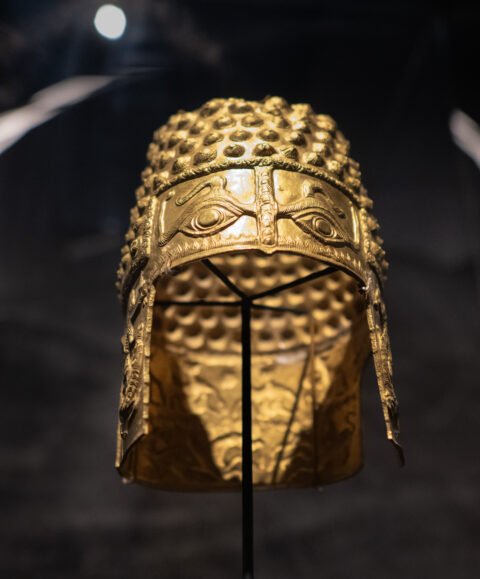
Dacia – Empire of gold and silver

- 7 July 2024 till 26 January 2025
- Drents Museum
More than fifty gold and silver treasures from Romania from the 20th century BC to the 3rd century AD are coming to Assen.
From 7 July 2024, the Drents Museum will present the major archaeology exhibition Dacia - Empire of gold and silver. More than fifty gold and silver treasures from Romania from the 20th century BC to the 3rd century AD are coming to Assen. Most of them date from the period before the Roman conquest (106 AD). With Dacia, the Drents Museum tells the story of the Dacians, one of the 'forgotten peoples' of world history. The exhibition can be seen in the Drents Museum until 26 January 2025.
In the 2nd century BC, the Dacians inhabited much of present-day Romania, Dacia. The unique geographical location - between the Eurasian steppe to the east, the Mediterranean world to the south and Central Europe to the west - made the area a crossroads of cultures. Greeks, Celts, Thracians, Scythians and Persians all had their influence on the Dacians, and elements of these different cultures can therefore be found in the objects. The Romans also took a great interest in Dacia. They devoted two battles to it before finally conquering the warlike people in 106 AD. In Dacia - Empire of gold and silver, the museum concentrates on the period before this conquest. The focus is on the identity of the Dacians and the impressive gold and silver treasures.


'Dacia' tells the story of the Dacians, one of the 'forgotten peoples' of world history.
Gold and silver
The wealth of natural resources ensured that Romania has traditionally had an important function. Thanks to the presence of gold mines, the inhabitants of Dacia achieved a very high level of precious metals processing, both technically and artistically. The objects were used during religious rituals or were offered, such as the solid gold bracelets from Sarmizegetusa Regia, then the capital of the Dacian empire. Some of the gold and silver treasures have been discovered in recent years and have never before been displayed in a museum.
Objects from Romanian museums
The more than 500 objects of gold and silver treasures come from at least 15 different museums across Romania. For the exhibition, the Drents Museum is collaborating with the National History Museum of Romania. Director Dr Ernest Oberländer-Târnoveanu is guest curator of Dacia.


Dacia - Empire of gold and silver can be seen from 7 July 2024 to 26 January 2025 and is part of the series of exhibitions on international archaeology, such as
- Iran - Cradle of Civilisation (2018),
- Under the spell of Mount Ararat - Treasures from ancient Armenia (2022) and
- Dying in beauty – The world of Pompeii and Herculaneum (2022).
The exhibition will be accompanied by an in-depth publication with contributions from various Romanian archaeologists.
There are several exhibition rooms in our building. The Singelzaal is the large exhibition hall directly at the bottom of the stairs at the main entrance. In the Abbey Church in our museum you will find the Adbijzaal (Abbey Hall) downstairs and the Kloosterzaal (Monastery Hall) on the upper floor. The Brinkzalen are rooms opposite the Opkamer.
Is there a hall you can't find? Please ask our staff. We are happy to help you.
So nice that you plan to come to the museum! There is plenty to do in the museum for all ages. The Largest Dollhouse in the Netherlands especially is recommended to families with children. Here you will find ten tips to make the visit to the Drents Museum with children even more fun.
Most of the museum is easily accessible for people with reduced mobility. Most floors are accessible by elevator and there are wheelchair-accessible toilets. The museum has free wheelchairs, walkers and folding stools for anyone who wants to use them. Unfortunately, part of the monumental section of the museum is less accessible.
Because of the number of wheelchairs and walkers being limited, you can reserve them via +31 (0)592 - 377 773.
More information about the accessibility of the building can be found here.
Supervisors (on presentation of a public transport companion card) and registered assistance and guide dogs are of course very welcome and can enter the museum free of charge.
Related pages
-
Amrita Sher-Gil - 'Europe belongs to Picasso, India belongs to me'
![]()
-
Breaking the silence
![]()
-
Labyrinthia
![]()
-
Microcosm - The world in a Wunderkammer
![]()






